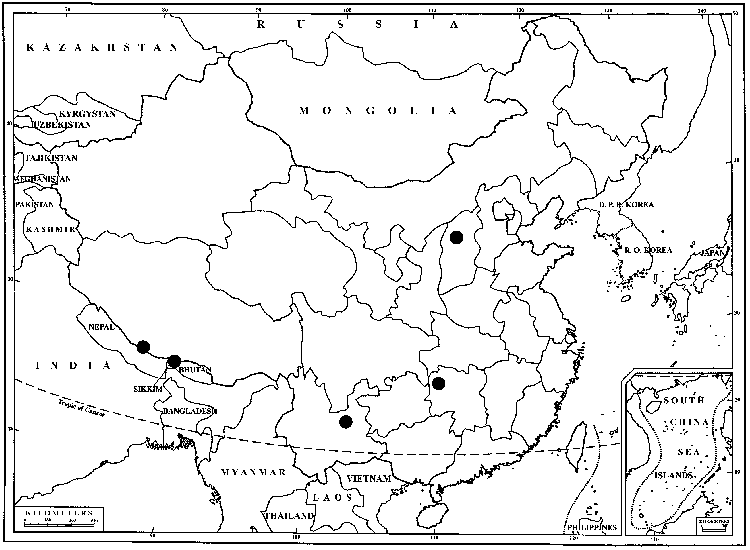Tortella humilis
Man. Mosses W. Pennsylvania, 96. 1913,.
Plants usually dull and dark green to sordid yellow-green distally, brown to black proximally, typically compact and rosulate to more elongate and showing annual whorls. Stems almost absent or stems to 0.5(–0.7) cm, central strand distinct, densely radiculose with red-brown radicles or infrequently populations with elongate stems without tomentum. Stem leaves densely foliose in rosulate habits, abruptly larger distally, the whorl-bases consisting of small leaves, loosely and variously incurled and contorted, occasionally somewhat crisped when dry, widespreading to patent when moist, typically oblong or oblong-spathulate, most leaves flat at mid leaf, somewhat concave and weakly keeled near the apex, not cucullate; 1.5–3.5(–4) mm; base subclasping and often appearing narrower than the limb to somewhat broader and elliptic; margins flat to weakly and broadly undulate, erect or broadly incurved near the apex; apex typically obtuse to broadly or occasionally narrowly acute, usually stoutly mucronate; costa short-excurrent, adaxial surface papillose, adaxial epidermal cells typically quadrate to short-rectangular and similar to the laminal cells throughout, sometimes smooth and narrowly elongate cells (8:1) toward the apex due to exposure of the stereid band or, in the extreme apex, exposure of the guide cells; in cross section adaxial epidermis present, often interrupted in the extreme distal portion of the leaf, proximal laminal cells yellow-hyaline, elongate, laxly thin-walled, gradually distally papillose, marginal basal cells longer and larger than median cells, occasionally approximating a band of differentiated cells; proximal cells interior to the marginal gradually differentiated from the distal laminal cells; distal laminal cells small, typically 6–7(–9) µm wide. Specialized asexual reproduction none. Sexual condition autoicous; perigonia small, distinctive, stalked, flattened, usually single, rarely geminate, frequently yellow or orange, foliose buds of 2–6 leaves in axils of the distal leaves alongside and proximal to the perichaetium; inner perichaetial leaves little differentiated from stem leaves. Seta about (0.5–)0.7–1.7 cm; one per perichaetium, but often three to four per plant from different branches. Capsule 1.5–3 mm; annulus deciduous in fragments; operculum 1.2–1.5 mm; peristome teeth, to over 1 mm, spirally wound 2 or 3 times.
Phenology: Capsules mature spring.
Habitat: Thuja swamps and bogs, near streams, hard and softwood forests, dry, exposed or moist and shaded stations, bark at the base of trees, acid or basic substrates, rock crevices and surfaces, sandy or humic soil, organic debris, mortar and brick, concrete, maritime and inland forests
Elevation: low to moderate elevations
Distribution

B.C., N.S., Ont., Que., Ala., Ariz., Ark., Conn., Del., Fla., Ga., Ill., Ind., Iowa, Kans., Ky., La., Md., Mich., Minn., Miss., Mo., Nebr., N.J., N.Y., N.C., Ohio, Okla., Pa., S.C., Tenn., Tex., Vt., Va., Wash., W.Va., Wis., Mexico, West Indies, South America, Europe, Asia, Africa, Pacific Islands.
Discussion
Uniquely among species of the genus in the flora area, except for var. arctica of Tortella tortuosa, in T. humilis the proximal laminal cells of the leaf are typically gradually differentiated from the distal cells with a zone of cells intermediate in color, cell size, cell wall thickness and papillosity, the angle of hyaline marginal cell differentiation typically shallow across the leaf base, then extending up the margins in a U shape. This character is typical of the genus Trichostomum, with which Tortella is closely allied. Small (depauperate) plants of T. flavovirens may share this character. Typical basal cell differentiation in Tortella is abrupt, the angle of differentiated cells steep, the proximal echlorophyllose and distal chlorophyllose cell boundary sharp.
In cross section, the costa of Tortella humilis diminishes in size toward the leaf tip: sectioning distally along the leaf, the epidermal layer first disappears, leaving up to two stereid cells in width exposed. In some instances at the extreme apex, even the stereid layer disappears leaving the guide cells exposed. The well-developed peristome—elongate and conspicuously twisted—will distinguish Tortella humilis from specimens of T. flavovirens and Trichostomum species, whose peristomes are either not or little twisted, or are rudimentary. Any specimen without fruit is unlikely to be Tortella humilis. H. A. Crum and L. E. Anderson (1981) well described and illustrated the rare species Trichostomum spirale from the Great Lakes region (Ontario, Wisconsin, Minnesota) that, like Tortella humilis, is a nearly stemless plant with gradually differentiated proximal cells and a similar leaf shape. It also has stalked perigonial buds and is autoicous. It may be distinguished by the peristome teeth said to be short, erect and smooth or marked with spiral lines rather than spiculose papillae, the latter characteristic of peristomes of the genus Tortella.
Selected References
None.